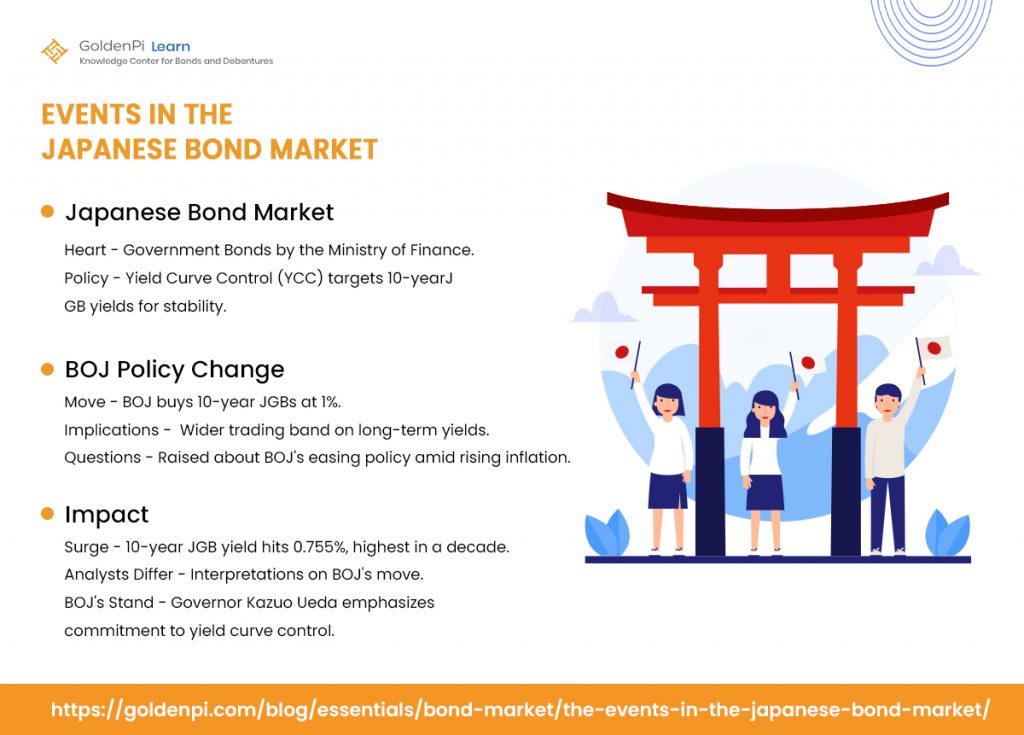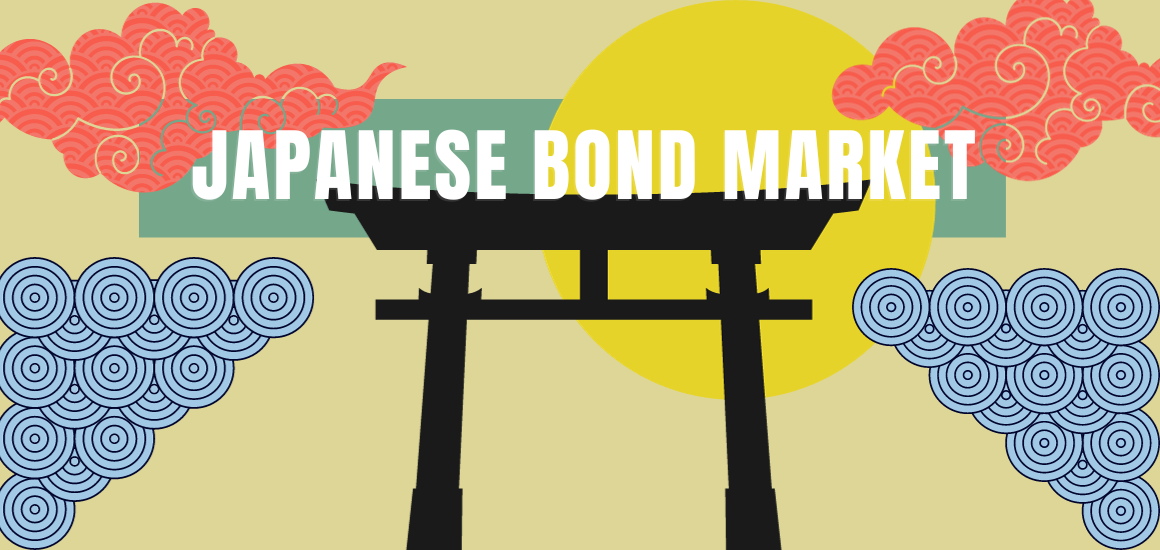|
Getting your Trinity Audio player ready...
|
Recently, the Bank of Japan (BOJ) made an unexpected move that sent ripples through the Japanese bond market, leading to questions and discussions about the future of monetary policy. Japan is currently in the news for making a Japanese Government Bond purchase of $12.7 bn as the yield in the market reached its decade’s high of 0.775%.In this article, we’ll delve into the intricacies of the Japanese bond market, and the BOJ’s surprising policy shift.

The Japanese Bond Market
Japanese Government Bonds (JGBs): At the heart of the Japanese bond market are government bonds issued by the Ministry of Finance. These bonds are renowned for their safety and play a vital role in financing government activities. They come in various maturities, making them an attractive option for both domestic and international investors.
Yield Curve Control (YCC): The BOJ implements a unique policy known as YCC, targeting a specific yield on 10-year JGBs, which was traditionally set at 0.5%. This policy aims to influence the entire yield curve and maintain market stability.
How Does Inflation Affect Bond prices?
The Recent BOJ Policy Tweak
In a surprising move, the Bank of Japan announced a change to its longstanding ultra-loose monetary policy. The central bank decided to offer to buy 10-year Japanese government bonds at 1% in fixed-rate operations. While this might seem like a straightforward adjustment, it has far-reaching implications:
Widening the Trading Band: Effectively, the BOJ has widened the trading band on long-term yields. This means that long-term interest rates now have more room to fluctuate before reaching the central bank’s “reference” level of 0.5%.
Market Confusion: The announcement raised questions about whether the BOJ was signaling a shift away from its easing policy, which had faced challenges this year due to rising inflation. However, the central bank clarified that it was not ready to allow yields to move freely, emphasizing its commitment to yield curve control.
The Impact of the US Treasury on the Indian Bond Market
Impact and Interpretations
The BOJ’s move triggered a surge in the 10-year Japanese Government Bond (JGB) yield, reaching as high as 0.755%, the highest in nearly ten years. While this adjustment might appear as the central bank yielding some ground, it’s crucial to understand its motivations:
Addressing Inflation Risks: The BOJ is navigating a landscape marked by rising inflation, which has hit four-decade highs. However, BOJ Governor Kazuo Ueda emphasized that the central bank is not prepared to abandon its bond-buying policy, which aims to depress yields and maintain control over the yield curve.
Enhancing Flexibility: Ueda stated that introducing “greater flexibility” into yield curve controls was a proactive measure to address inflation risks and allow market forces to play a role in bond yield pricing while preserving the sustainability of the easing framework.
Market Reaction: The move, while interpreted differently by analysts, has certainly invited market participants to scrutinize the central bank’s resolve and has raised questions about the future of yield curve control.
The Wrap
The Japanese bond market is a complex ecosystem influenced by both domestic and global factors. The recent BOJ policy tweak, while unexpected, reflects the challenges faced by central banks in navigating uncertain economic terrain. The central bank’s aim to strike a balance between addressing inflation risks and maintaining policy stability underscores the delicate nature of monetary policy decisions.






